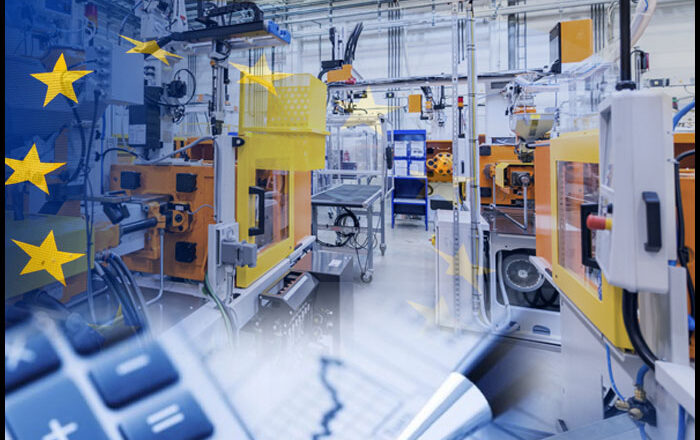Eurozone Services Activity Lifts Private Sector Growth To 10-Month High
Eurozone private sector logged the strongest growth in ten months in March underpinned by the robust expansion in services activity though the manufacturing sector remained stuck in the contraction zone.
The flash composite output index rose more-than-expected to 54.1 in March from 52.0 in February, survey results from S&P Global showed Friday. The expected score was 51.9.
Powered by the service sector, the private sector expanded for the third successive month in March. The survey added to signs that the economy is reviving after falling into decline late last year.
The survey is consistent with GDP growth of 0.3 percent in the first quarter, accelerating to an equivalent rate of 0.5 percent in March alone, S&P Global Market Intelligence Chief Business Economist Chris Williamson said.
However, Capital Economics economist Franziska Palmas said the euro-zone economy will fall into recession later this year as demand weakens and the drag from higher interest rates intensifies.
The European Central Bank had raised its benchmark rate by 50 basis points as inflation was projected to remain high for too long. The bank had slowed the pace of interest rate hikes to 50 basis points from 75 basis points in December.
At 55.6, the services Purchasing Mangers’ Index also hit a 10-month high in March, up from 52.7 in February. Despite concerns regarding the banking sector stability, there was a revival of growth in financial services.
On the other hand, the manufacturing PMI fell to a four-month low of 47.1 from 48.5 in the previous month.
At composite level, new orders grew at the steepest pace since May. However, growth in new business in the service sector contrasted with a sharp fall in manufacturing orders.
While the rise in new business led to backlogs of work accumulating in the service sector, falling orders in manufacturing led to the steepest fall in backlogs for four months.
The survey showed a record easing of supply constraints in March. This has also led to sharp fall in demand for inputs.
Driven by supply chain improvements, industrial input prices fell for the first time since mid-2020. However, service sector firms reported another steep growth in input costs. Measured overall, input costs rose at the slowest rate since March 2021.
At the same time, average prices charged for goods and services continued to increase sharply.
Further, employment growth improved to a nine-month high in March, accelerating notably in services to a ten-month high as firms sought to keep pace with rising demand.
Finally, optimism about the year ahead declined from February’s 12-month high but remained among the highest seen over the past year.
Within the euro area, output rose for a second straight month in both France and Germany.
Germany’s private sector expanded at the fastest pace since May last year but growth remained moderate due to continued weakness in manufacturing. The composite output index advanced to 52.6 in March from 50.7 in February.
The reading was also above the expected level of 51.0. Nonetheless, the score still signaled that growth remained below its pre-pandemic level.
The services PMI registered 53.9 in March compared to 50.9 in February. The index was well above economists’ forecast of 51.0.
On the other hand, the manufacturing PMI slid to 44.4 from 46.3 in the previous month. The reading was forecast to rise to 47.0.
France’s private sector also logged the second successive growth in March, exclusively driven by services activity. At 54.0, the composite output index reached a 10-month high, up from 51.7 in February. The score was seen at 51.8.
The services PMI improved to 55.5 in March from 53.1 in the previous month, while the reading was forecast to fall to 52.5.
The manufacturing PMI climbed less-than-expected to 47.7 from 47.4 a month ago. The score was forecast to rise to 48.0.
Source: Read Full Article

